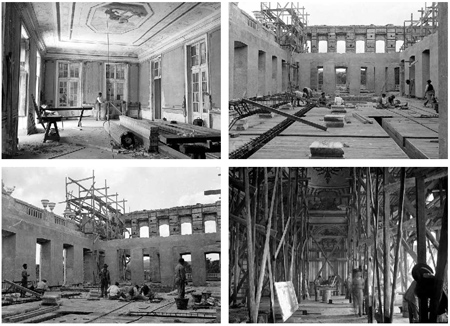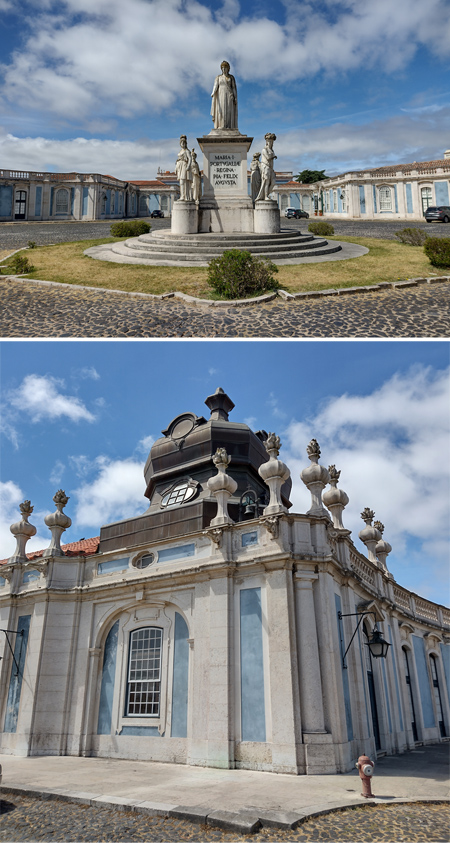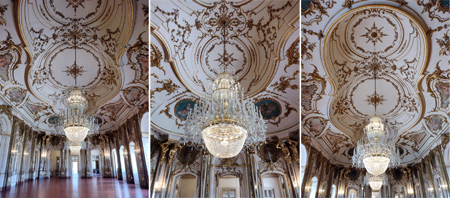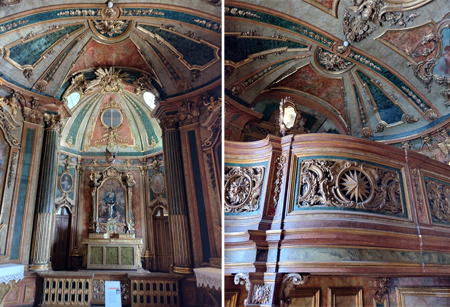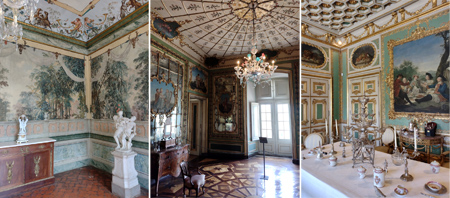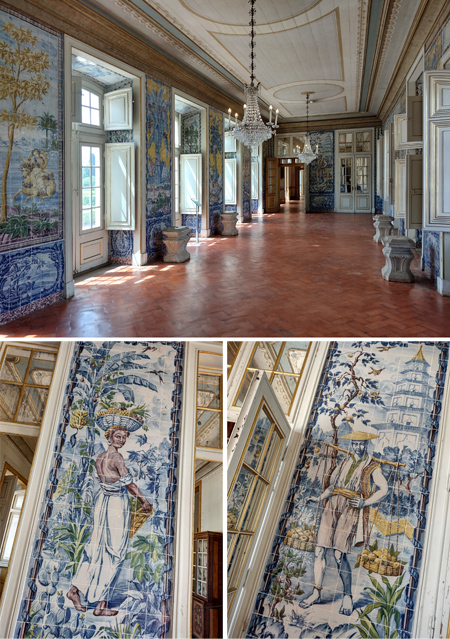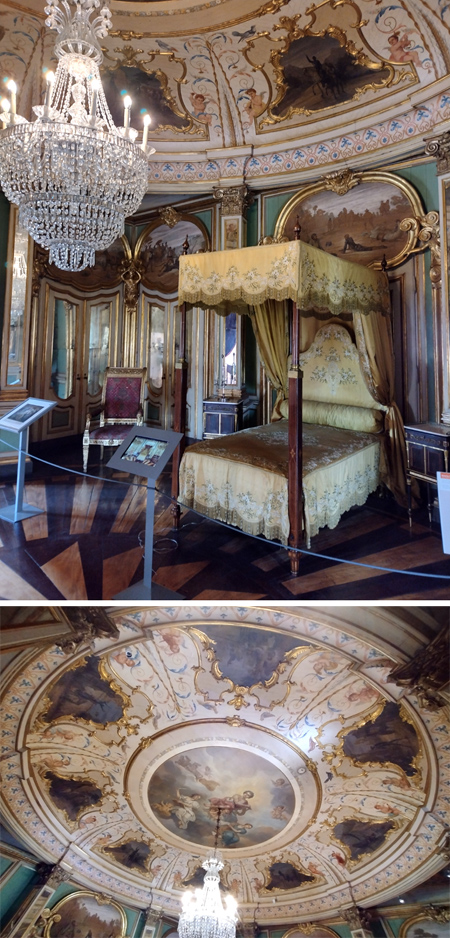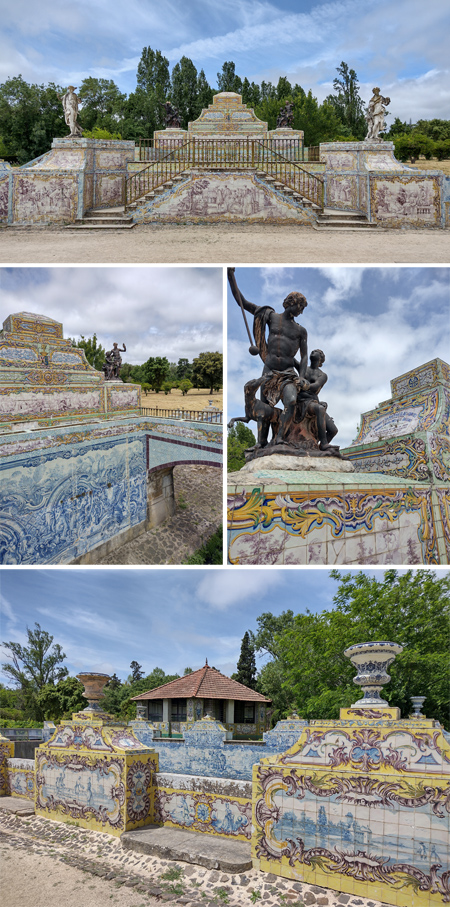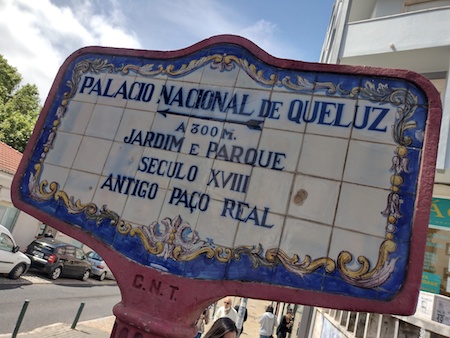
Everyone raves about the Palácio da Pena. Spectacular for sure, but endless crowds & high ticket prices make visiting the palace little more than an exercise in patience. Zero fun. Go to Sintra for natural beauty, but a better glimpse of royal family life can be found without the crowds on the same train line halfway between Lisboa & Sintra. Twenty years had passed since my first visit to the Palácio de Queluz, & strolling through its well-kept grounds made for a gorgeous, crowd-free morning.
Royal takeover
The land occupied by the palace didn’t always belong the royal family. Cristóvão de Moura, a figure rarely discussed today, had been vital in negotiating the incorporation of Portugal into the Spanish empire during the reign of Felipe II. That’s a whole can of worms, but here’s the short version: King Sebastião died in battle in Morocco without an heir in 1578. His cardinal brother ruled for a bit, but when he also died there was no male descendant to take over. Rewinding the family tree meant the next-of-kin was —horror of horrors— the King of Spain.
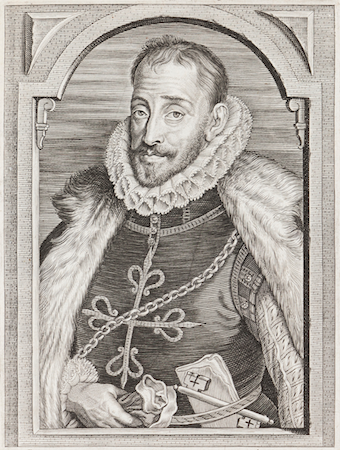
Moura helped set up a council to ensure a smooth transition & was given the title of Count by Felipe II for his hard work. His rank was later upgraded to Marquis by order of Felipe III. Moura’s descendants, the Marqueses de Castelo Rodrigo, continued to have influence in the Spanish court for almost a century.
That would change when Portugal gained its independence again in 1640. As punishment for working on behalf of Spain, the marquises had the totality of their Portuguese property & land holdings confiscated by King João IV. Many of these —including the country estate of Queluz— became incorporated into the Casa do Infantado, a title given to the second son of the king who would likely never be heir to the throne. Time for the prince to play.
Rococo residence
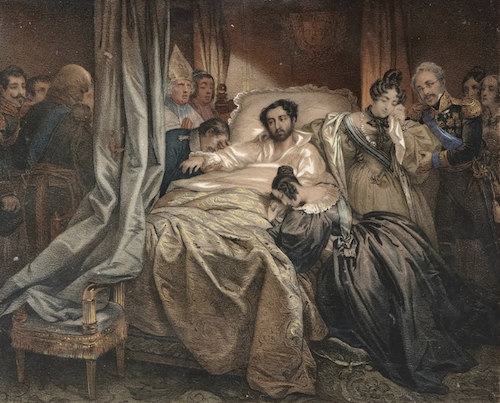
Works began in 1747 to improve & enlarge the original houses used by the Moura family. Second son Dom Pedro decided to use the estate as his primary residence, & gold from Brazil funded a lavish palace. A fire in the Palácio da Ajuda made Queluz the main royal residence at the end of the 1700s. But all that luxury would be abandoned in 1807 when the royal family fled Portugal as Napoleon’s troops advanced on the capital. The royal family wouldn’t return until 1821, but Queluz took the spotlight again as their main residence. Generations of Portuguese kings & queens were born (& died) here.
1934 fire
Ceded by the royal family & placed under government care in 1908, the palace became part of an agriculture school for two decades. Revalued for its historical & architectural heritage, restoration works began in 1933.
But a careless worker left his cigarette butt near flammable substances & bam… most of the palace was soon engulfed in flames. The fire destroyed the uppermost floor of the palace along with several living spaces & the façade facing the garden. Rebuilding commenced almost immediately. You can see the extent of the damage below:
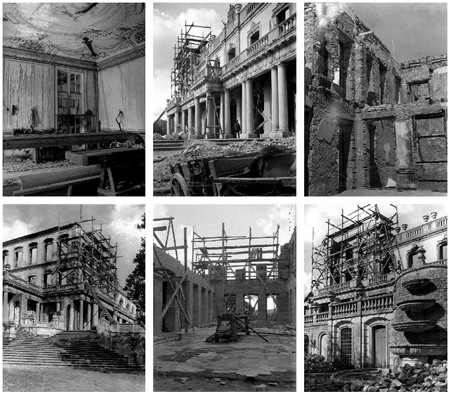
2002 visit
When I started to work for Rick Steves, I took advantage of time off to discover new places on my own. I visited Queluz in 2002, when the buildings & grounds seemed decadent, exotic & a little lost in time. Although in need of some TLC, I couldn’t get over the fact that I had the palace all to myself.
20 years later
When my friend John visited in May, I wanted to avoid the Palácio da Pena crowds & immediately thought of taking him to Queluz instead. I knew things had changed since my last visit but wasn’t prepared for all this: the exterior took on its original, greyish-blue color, interiors were cleaned & ceiling frescoes restored. What a treat! Some of the highlights of our visit are below…
Sala do Trono:
Capela:
Various chambers like the smoking room & the small dining room are set up as they would have been used:
Corredor dos Azulejos:
Quarto de D. Quixote:
Sala dos Embaixadores:
Pavilhão Robillion:
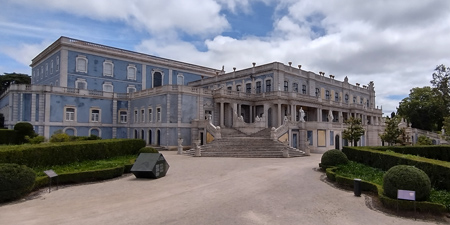
Canal dos Azulejos:
Catarata:
Have I convinced you to skip the Palácio da Pena yet? 😉 It’s great to hop off the train in Queluz before everyone else that’s headed to Sintra. And afterwards, lunch in the town of Queluz is a great option if you’re on a budget. We hopped on an afternoon train to Sintra to stroll/climb through the parks when most tourists had already left. What a fantastic —and crowd-free— day!
